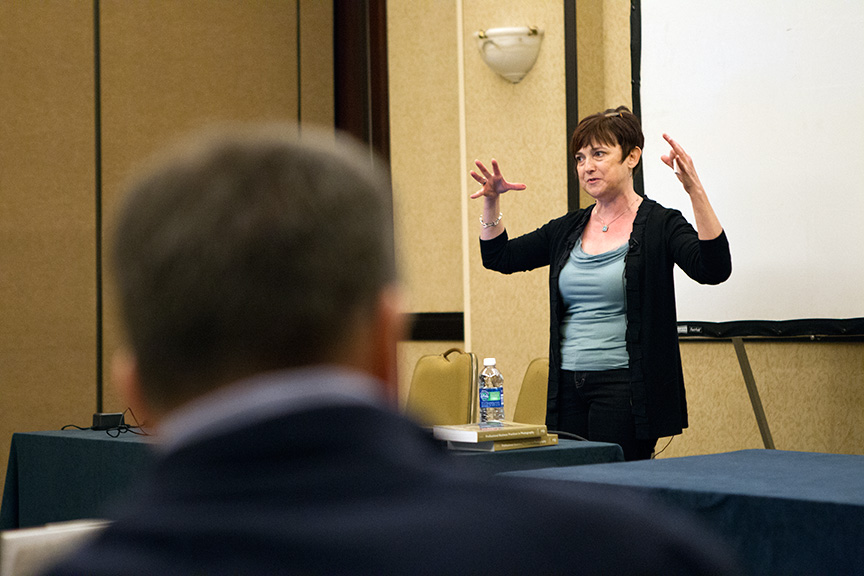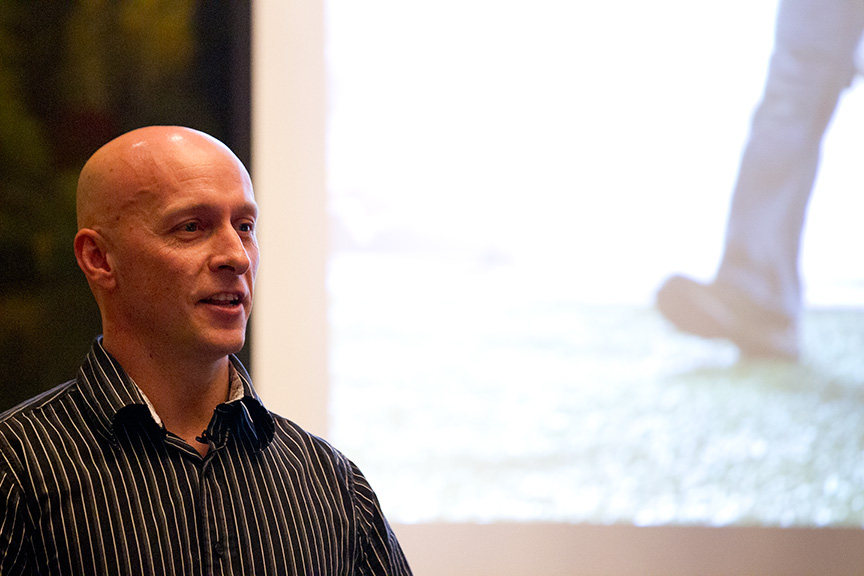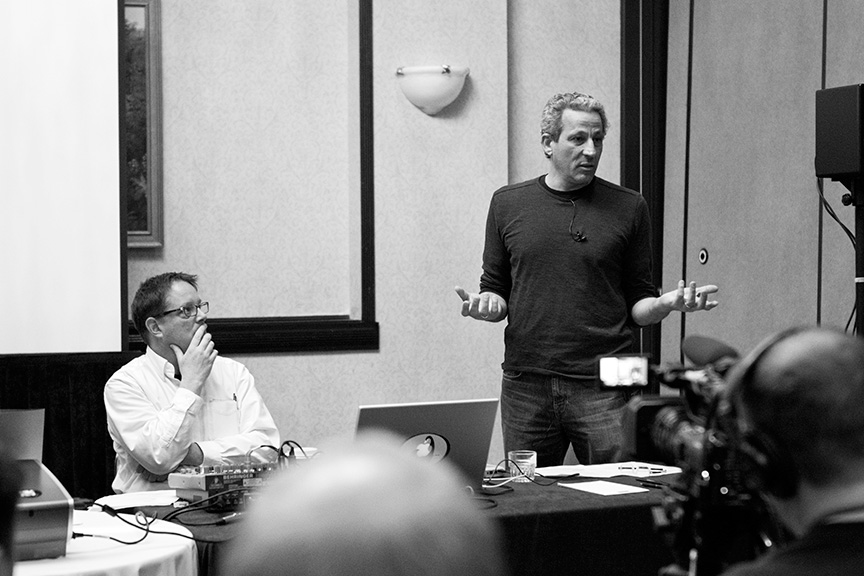The third and final day of the 2012 Northern Short Course in Photojournalism began with a real treat: Gerd Ludwig.
Ludwig is an amazing German photographer who has worked for pretty much any publication that matters (Time, Nat Geo, Life, Stern, Spiegel, etc.), producing a poignant body of work that focuses heavily on the former USSR.
Because his coverage is an insight to Soviet and post-Soviet life in Eastern Europe, he had to do a lot of research in order to take proper photographs, focus his efforts, and to gain access to places where an unprepared photographer couldn’t go.
Research is crucial to photography as it directly influences your photos, Ludwig says. This, many times, can be plainly visible in the manner in which a photograph is taken by two photographers in the same event. One may have done a judicious amount of research while the other is largely ignorant. The ignorance affects timing, composition, and captioning of the image — robbing it of proper meaning, context, and ultimately dignity.
The dignity of the person, particularly of the unfortunate and suffering was a point Ludwig made. He said that we should approach and photograph a person truthfully, but with respect.
“Pointing a camera towards underprivileged people, you increase their pain,” he said.
In those situations, simply the perspective of a photograph says more about the photographer than it does about the subject. One can be condescending and disrespectful with their camera.
Ludwig did not discuss technique, but more esoteric aspects of photojournalism and the work that goes into getting the right photograph. He also gave some pointers on leveraging modern technology and communications to build an interested community and leveraging crowd-sourced funding (Kickstarter) as a means of financing work.
So, what is Ludwig’s favorite camera setting?
“1/125th at 50 years,” he said.
After Ludwig’s great and informative morning lecture. I attend a few more workshops that were more tailored to my needs and interests.
Judy Herman from the American Society of Media Photographers (ASMP) gave an excellent workshop on freelancing. She covered everything from designing a business, accounting, insurance, legal, and marketing to good pointers on portfolio presentation.

A particular favorite for the audience was Herman’s “No Assholes” policy when accepting work. She says it is important that the client respects you and appreciates your work when they approach you for a job. A big paycheck from a bad client isn’t going to be as worth it as a smaller paycheck from great client.
Herman presented three questions to focus freelancers in planning and designing their business:
- What do you want?
- What are your values?
- What is your dream job?
Out of these three questions, the one regarding values is perhaps the most important as it will determine if you really want that dream job or not. It then loops back to the question about what you want. This helps reduce wasted time, energy, and money on ventures you may actually not want to pursue because they conflict with your values.
After Herman’s lecture another nice one was Jason Reed’s (Reuters) introduction to the latest video editing software from Apple, Final Cut Pro X.
To me, Final Cut Pro 7 was too complicated to even get a project started. You couldn’t even play with it the same way you could with Photoshop, iMovie, or many other visual editing software. Final Cut Pro X, via Reed’s intro and explanation, actually brought video-editing a huge step closer to reality for me.

He did an energetic explanation of the new features and backed up each point with an example. Within his time allotted, he managed to do a rough cut an actual project from scratch while demonstrating the speed and new features of this latest edition.
Ravens rule the skies from Reuters Pictures Washington on Vimeo.
The final workshop I attended was about collaboration with Rob Rosenthal and Ed Kashi. This one was really good as story consumption has become a multimedia experience. Rosenthal is a radio journalist and Kashi is a photographer. Each person has their specialty, one audio and one visual. They gave us pointers on how to smoothly work with one another on such projects.
Although Kashi is a master of photography, he conceded that in multimedia, “audio is king.”
In a project where two art forms could conflict, it is important that each person anticipates the others needs. For example, Rosenthal needs clean audio, so Kashi cannot be taking photos during his recording and Kashi needs photographs so Rosenthal needs to be outside the frame. Each person is trying to get what they need, but this sensitivity enables the project to be achieved.

Overall, and within each workshop I attended, the NPPA did an excellent job with their selection of topics as well as their selection of lecturers. Each workshop leader was not only an expert and award-winning, but also a great educator. The NSC did exactly what it was supposed to do: open the doors to new possibilities in storytelling.
